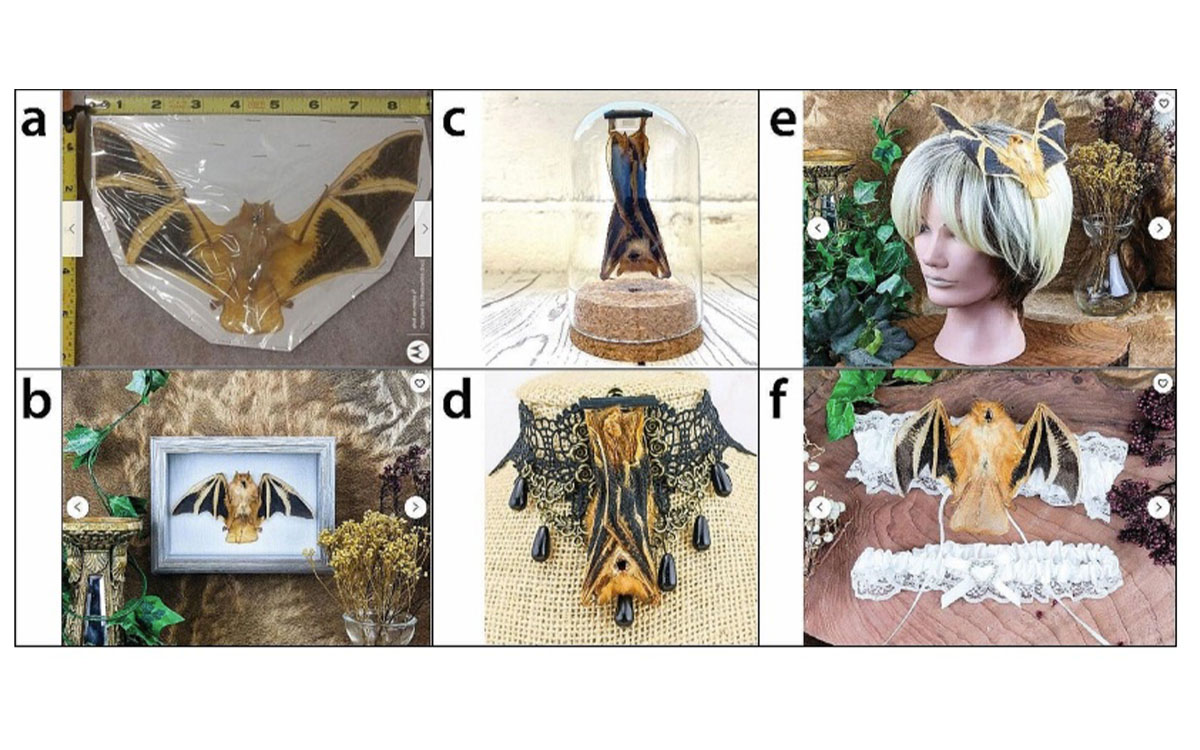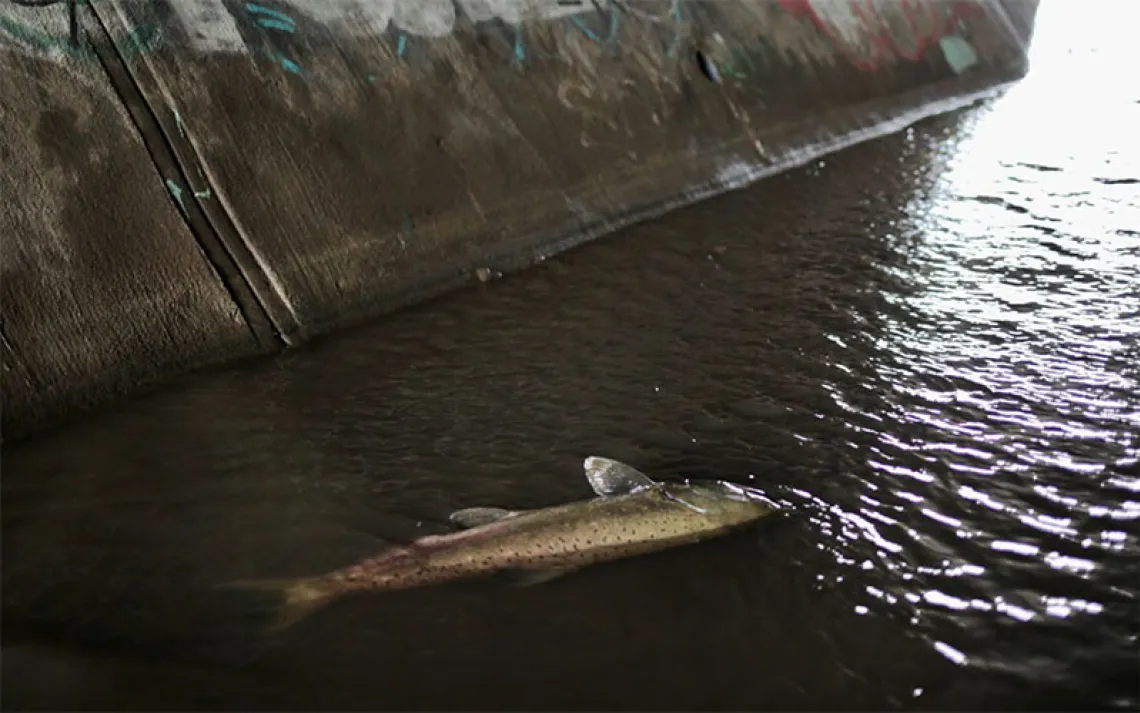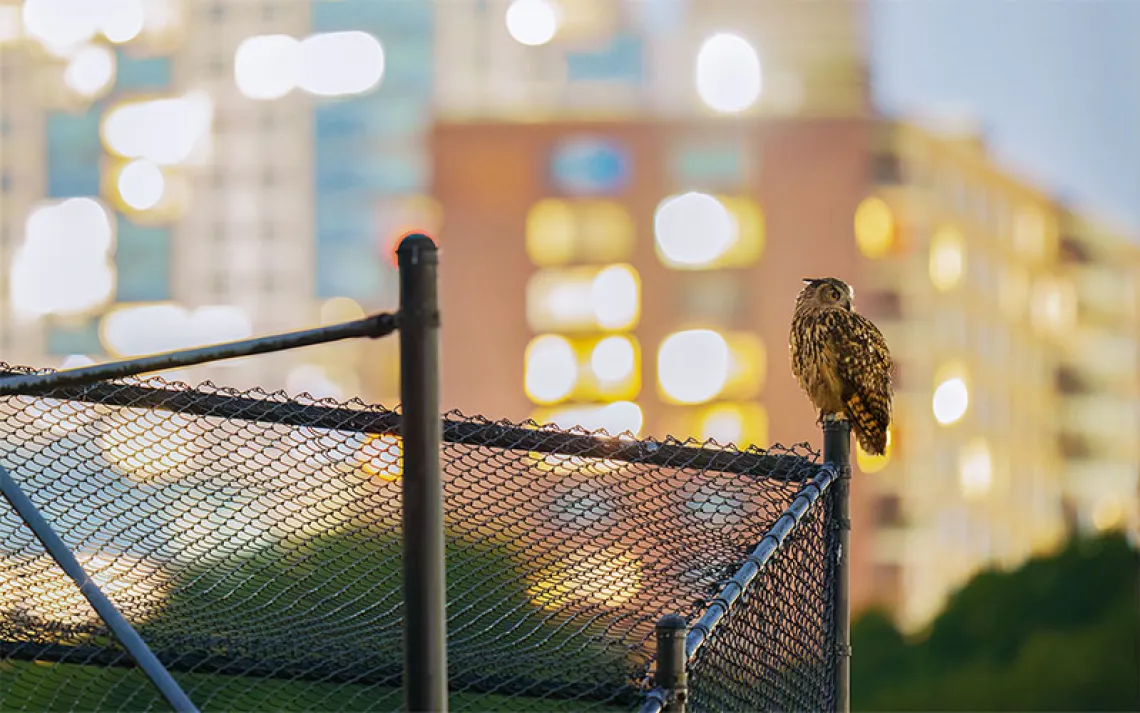Researchers Find That Decorative Bats Purchased Online Are Often Endangered Species
The US plays a key role in the global ornamental bat trade

A painted woolly bat, or Kerivoula picta, roosts under a leaf in Indonesia. This species does not live in groups, but as individuals or pairs in the plantations and forests of south and southeast Asia. (Abu Hamas / iNaturalist, CC By-NC 4.0)
Scroll through websites like Etsy or eBay for decorative bats and most of what you’ll find are black PVC or cardboard items you can hang to your wall or ceiling. But for the first in-depth study of the online bat trade, researchers found hundreds of listings for taxidermied bats over a three-month period.
From October to December 2022, investigators from the International Union for Conservation of Nature (IUCN) Bat Trade Working Group retrieved 856 unique bat listings from Etsy, Amazon, and eBay and scrutinized them for information. They found that nearly two-thirds of the listings were by US vendors, with merchants shipping from as many as 30 states. The researchers also found that 25 percent of the listings were for the painted woolly bat (Kerivoula picta), a tiny, brightly colored species from Asia classified by IUCN as “near threatened.”
“I find the [ornamental bat] trade extremely frivolous,” says Joanna Coleman, coauthor of the paper and assistant professor at Queens College, City University of New York. Coleman is also the cochair of the IUCN Bat Trade Working Group.
Most of the mummified bats advertised online were in perfect or near-perfect condition and were being sold either unmounted or placed inside small frames or display boxes, or mounted on personal accessories like hairbands and necklaces.
The painted woolly bat is an insectivorous species, with a short lifespan of about a decade. It produces only one offspring at a time, making the species’ population particularly vulnerable to declines. The bat trade is detrimental not only to these flying mammals but to humans and the environment as well. These bats—often found roosting in the dried and drooping leaves of banana plants—are known to be sparse in their landscape, with just one or two individuals in an area of five or six hectares.
Coleman suspects the hunters—usually impoverished plantation workers—might be removing every individual they see. “A lot of buyers genuinely have no idea that these bats are being hunted in the wild,” Coleman says. She attributes this, in part, to several listings that falsely claim that the bats were captive bred or were found to have died a natural death. Coleman dismisses these claims. Insectivorous bats like the painted woolly bat are extremely difficult to breed in captivity, and a natural death in the tropics means quick decomposition, which would prevent an intact specimen from being collected.

The researchers' online searches returned listings for Kerivoula picta for sale in diverse formats. Many were for (a) standalone (unmounted) specimens and bats mounted on wooden dowels (not shown). Specimens were also commonly mounted in (b) frames and (c) jars, and on (d) necklaces, (e) hair combs and (f) garters. All images are screenshots of eBay and Etsy listings. (Study figure)
Many listings make additional misleading claims. Some tell the buyer that they are supporting the conservation of the species; others say that they are contributing to areas where the bat is found. “This is likely not true, and buyers would be inadvertently contributing to the decline of the species,” says data scientist Nistara Randhawa, coauthor of the paper.
It is not known if painted woolly bats, or bats in general, pose any health risks to people. But like any wild animal, they could carry pathogens dangerous to the hunters and the people around them. “Human beings shouldn’t be touching them,” says Coleman. Hunting bats also deprives the ecosystem of essential services like pest control, which can lead to larger health problems in humans.
Legislation to protect painted woolly bats in range countries is either nonexistent or if laws exist, the enforcement is poor. “We’re seriously concerned that there might not be a lot of these bats left,” Coleman says.

Make every day an Earth Day
Get articles like this one sent directly to your inbox.
With this action you affirm you want to receive Sierra Club communications and may vote on policy designated by the Sierra Club Board.
Randhawa also studied the comments left on the listings. She often observed statements like, “I love this bat” and “This is a nice gift for my niece or grandson who loves bats.”
“There’s a disconnect,” Randhawa says about these buyers. “They don’t realize they are contributing to the illegal bat trade.”
In May 2024, the Tucson-based Center for Biological Diversity and Vancouver-registered Monitor Conservation Research Society jointly filed a legal petition asking the US Fish and Wildlife Service (USFWS) to list the species as threatened or endangered under the Endangered Species Act. A decision is expected at the end of the year. If the petition succeeds, the listing will shut down the legal trade in this species to and within the United States.
In July, Etsy, in response to the media attention generated by the study and pressure from conservation nonprofits, updated its policy on prohibited wildlife species to include all bats. eBay has removed nearly all listings of bats, and there are no more listings for painted woolly bats.
Still, bats are being sold on many other e-commerce platforms, like Amazon and Alibaba, and they could easily return to sites from which they have been removed. “We have a steep hill to climb if we want to end the global ornamental trade in bats,” Coleman says.
The paper’s authors will petition for the painted wooly bat to be added to the CITES Appendix 1 in December 2025, at the next Conference of Parties on International Trade in Endangered Species of Wild Fauna and Flora. This would prohibit any international trade of the species, except for noncommercial purposes like scientific research.
Bat conservationist Dave Waldien, who previously led the nonprofit Bat Conservation International, asks people “to avoid continuing to use any decorations from real bats or bat parts.” He encourages people who currently have such decorations to “consider donating them to academic institutions or conservation organizations for use in educational and research activities.”
“We need to act quickly,” says Coleman. “Our goal is to completely shut down the ornamental bat trade worldwide.”
 The Magazine of The Sierra Club
The Magazine of The Sierra Club



